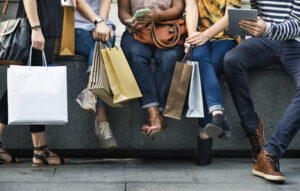Consumer sentiment will make or break any post-pandemic recovery. Michelle Buxton, CEO, looks at how retail destinations can reassure shoppers while adapting to the new trading environment?
Non-essential shops in England reopened on Monday 15 June, with mixed results. As witnessed in the media, the cameras focussed on queues outside branches of Primark – a brand that does not trade online so inevitably created pent-up demand when its stores opened. But data from Springboard shows that footfall was at best two-thirds of the levels seen on the equivalent day a year previously.
This chimes with the experience in markets that opened ahead of the UK. Unibail-Rodamco-Westfield reports that its schemes in Germany, Austria and the Czech Republic are trading at around 80% of pre-pandemic levels, while its French centres are seeing 60% to 65% of normal footfall.

What can centre operators do to reassure those who are showing reluctance to shop that it’s safe to venture out? It’s important to acknowledge the Covid-19 pandemic, and three months of lockdown, are among the most dramatic events that any of us have witnessed. It’s inevitable they will leave psychological scars. As we’ve seen with the controversy over reopening schools, many of us have become highly risk-averse.
But at the same time, it’s essential that economic activity begins again – albeit in a safe and controlled way – or many will find they don’t have jobs to return to once the lockdown eases. The recession which follows could prove as damaging to many lives as the pandemic itself.
Experience
So what strategies should operators be using? Communicating the practical steps that malls are taking – like one-way systems and floor stickers to ensure social distancing – is only part of the story. Equally important will be ‘softer’ messaging and this could be the key factor when consumers choose one centre over another.

Some in the shopping centre industry has been saying that the days of ‘experiential’ shopping are gone and that post-pandemic shopping missions will focus on the functional. However, consumers have become very adept at carrying out functional shopping online, and it’s only by offering an experience that we will tempt them off their sofas and into the malls.
It’s just that the experience offered is going to be different. Respecting social distancing and offering reassurance to nervous shoppers.
Retailtech
Unsurprisingly, technology has a role to play. Retailtech is nothing new. We’ve been talking about an omnichannel approach for years now. But what the pandemic has shown is that it is no longer exclusively the brands’ domain. Landlords will need to get on board with digital quickly. They should realise that the new normal will rely heavily on data-driven efficiencies and frictionless experiences that no longer view physical and digital as two separate entities.
Rather, a seamless customer journey should reap the benefits of both. Forget about the mile-long queues outside Apple and Nike on Monday. Instead, imagine a world where a shopper is able to access real-time data on how busy the mall is. Shoppers can pre-book their spot and queue virtually, pay in a contactless way and gain rewards for their loyalty. A shopper is any retail destination’s most valuable stakeholder. They should feel connected to their local centre and be regularly reassured their safety is of the utmost priority through targeted, two-way communication.
Luckily, for the most forward-thinking landlords, this is not a future but a very real present. One that has never been more clearly enforced by outstanding circumstances than right at this moment in time.


